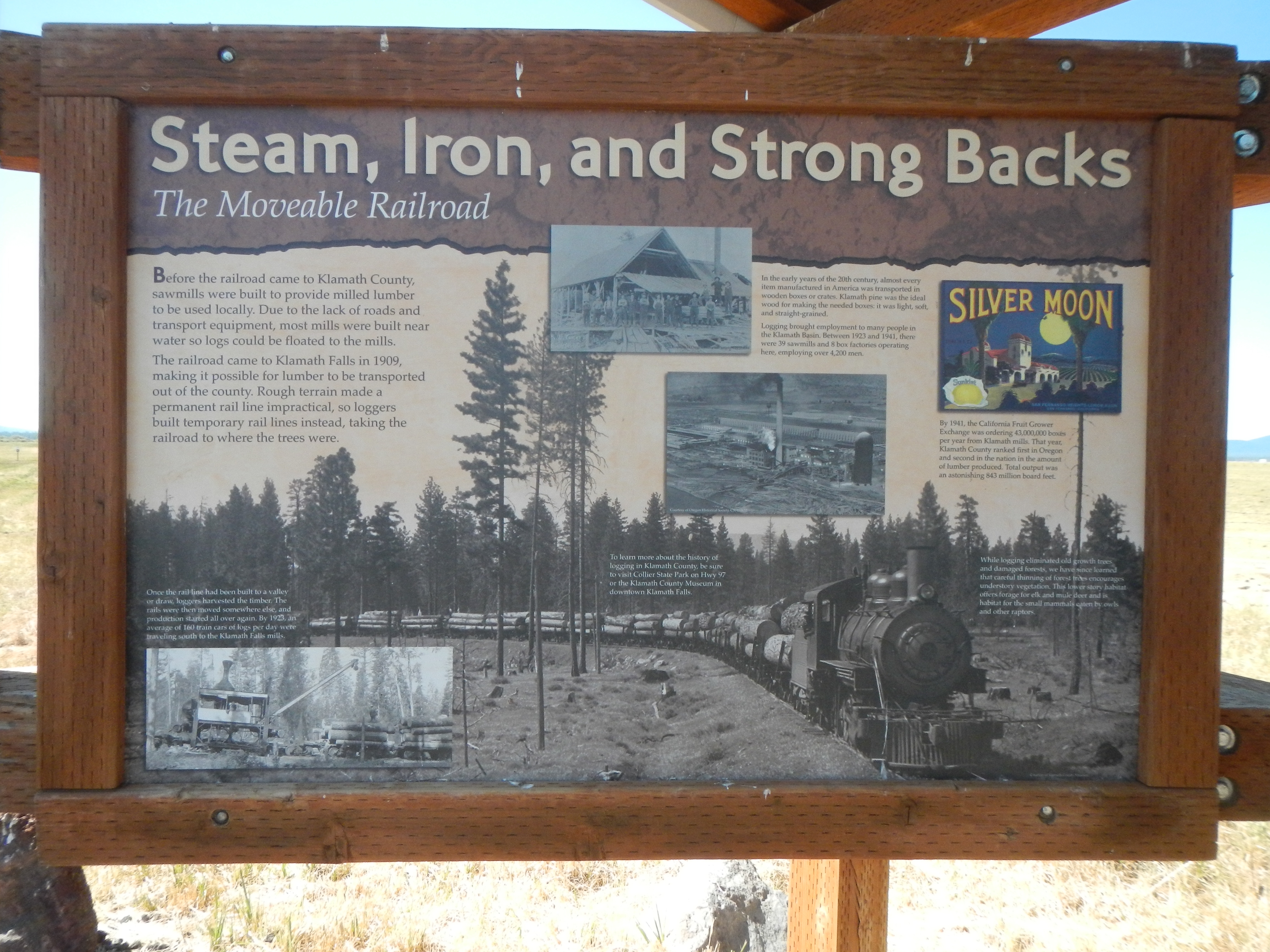Photograph as originally submitted to
this page in the Historical Marker Database
www.HMdb.org.
Click on photo to resize in browser. Scroll down to see metadata.
Photographer: Barry Swackhamer
Taken: August 7, 2020
Caption:
Steam, Iron, and Strong Backs Marker | Additional Description: Captions: (background) While logging eliminated old growth trees and damaged forests, we have since learned that careful thinning of forest trees encourages understory vegetation. This lower story habitat offers forage for elk and mule deer and is habituate for the small mammals eaten by owls and other raptors.; (bottom left) Once the rail line had been built to a valley or draw, loggers harvested the timber. The rails were then moved somewhere else, and production started all over again. By 1923, an average of 160 train cars of logs per day were traveling south to the Klamath Falls mills.; (top center) In the early years of the 20th century, almost every item manufactured in America was transported in wooden boxes or crates. Klamath pine was ideal wood for making the needed boxes; it was light, soft, and straight-grained. (center) Logging brought employment to may people in the Klamath Basin. Between 1923 and 1941, there were 39 sawmills and 8 box factories operating here, employing over 4,200 men.; (upper right) By 1941, the California Fruit Grower Exchange was ordering 43,000,000 boxes per year from Klamath mills. That year, Klamath County ranked first in Oregon and second in the nation in the amount of lumber produced. Total output was an astonishing 843 million board feet. To learn more about the history of logging in Klamath County, be sure to visit Collier State Park on Hwy 97 or the Klamath County Museum in downtown Klamath Falls.
Submitted: October 7, 2020, by Barry Swackhamer of Brentwood, California.
Database Locator Identification Number: p542341
File Size: 3.516 Megabytes
To see the metadata that may be embedded in this photo, sign in and then return to this page.
